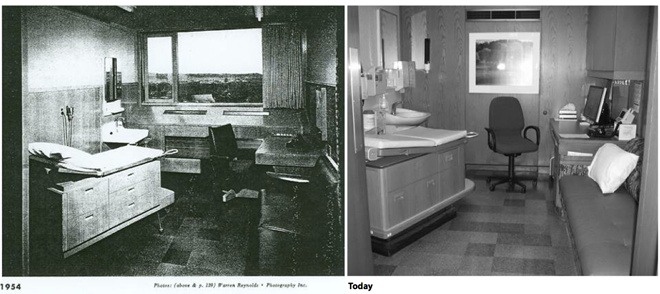Design: Because Great Customer Experiences Don’t Happen By Accident
The discipline of design remains largely misunderstood in the business world. Let me dispel a couple of myths for you: Design isn't simply about picking the right shade of blue for the company logo. And it’s not solely the domain of black-turtleneck-wearing creative types.
Design is a straightforward and repeatable problem-solving process that incorporates the needs of customers, employees, and business stakeholders. It’s also a way of working that focuses on making and refining tangible solutions. Everyone in an organization can learn and leverage design to meet or exceed their customers’ needs and desires. That’s key, because great customer experiences don’t magically spring into existence — they need to be actively designed.
In Forrester’s soon-to-publish book, Outside In, Harley Manning and I illustrate the importance of design through a case study about Mayo Clinic. The physical layout of Mayo’s outpatient rooms has basically remained static over the past six decades. The equipment for physical examinations — the reclining table, dressing area, sink, and tools like scopes and blood-pressure cuffs — still dominates each room, but these days, the bulk of each appointment is simply a conversation between the doctor and patient.

A team working to improve the outpatient experience came up with the idea of creating separate consultation and exam rooms. But that solution wasn’t going to work. There simply wasn’t enough floor space in the Clinic’s facilities to accommodate the number of separate rooms required to serve patients.
Then inspiration struck from the least likely of places: the Brady Bunch bathroom. If you haven’t seen the show in a while, the Brady’s bathroom layout — technically referred to as a “Jack and Jill” — had one bathroom with two doors, each leading to a bedroom on either side. In the Mayo version, the team thought, two consultation rooms could share one inner exam room.
It sounded intriguing, but Mayo wasn't sure if it would really work in a real clinical setting. Now, Mayo could have talked about whether or not it was going to work until it was blue in the face — but because it was following a design process, the team decided to prototype and test its idea. It took three of its existing exam rooms, cut doors in the walls, and reconfigured the spaces into the Jack-and-Jill format. Then it invited several doctors to see actual patients in these rooms for a month. Based on the feedback the team received from doctors, patients, and other hospital support staff, it continued to make modifications that further improved the patient experience — like turning up the temperature in the exam room by a few degrees.

Ultimately, the team was able to go to the Clinic’s space-planning committee with an arsenal of data that supported the Jack-and-Jill floor plan. This was data that it was only able to get because it followed a design process that included prototyping and testing its ideas.
Design is just one of six disciplines that companies must master if they want to achieve the full potential of customer experience. The others are strategy, customer understanding, measurement, governance, and culture. Of course, most of these concepts aren’t new in the business world — but they do take on a slightly different twist when it comes to customer experience. If you’d like to know more about the six disciplines and how they’ll help you create great experiences for your customers, please visit outsidein.forrester.com.